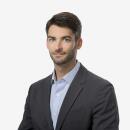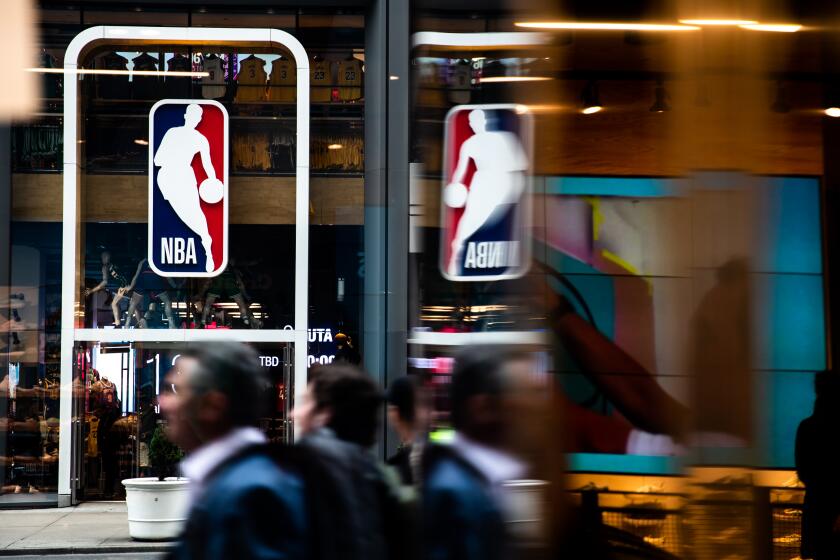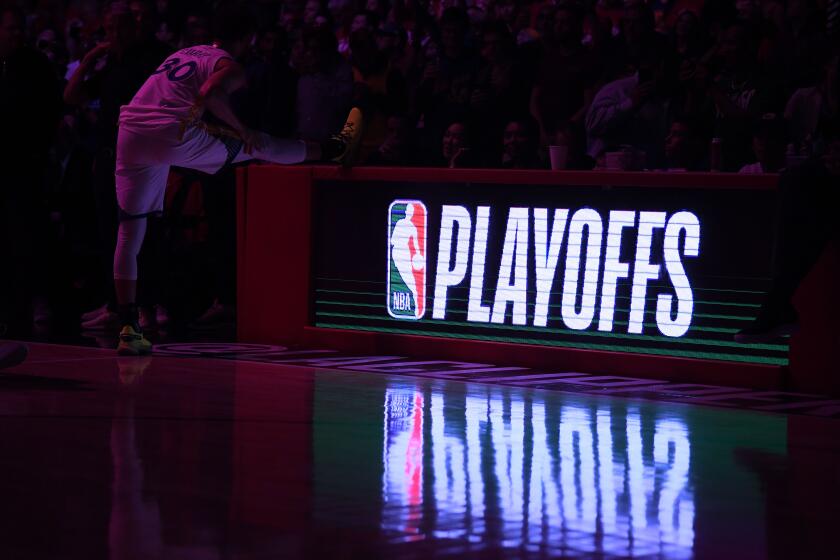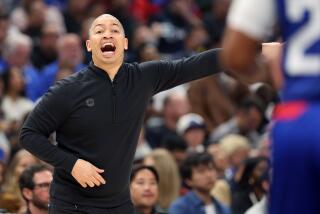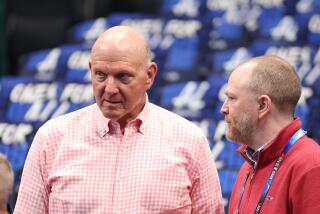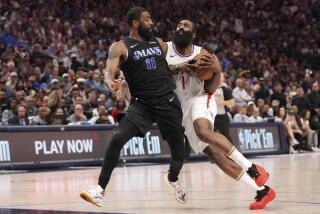Mark Hughes, a finalist for Bulls GM job, plays key role for Clippers
Last summer, the Clippers approached assistant general manager Mark Hughes about taking on a new responsibility.
They wanted one executive to manage the team’s travel party all season, ensuring that on road trips communication would remain smooth between players and coaches, coaches and a large medical staff, and the travel party and everyone else back at Clippers headquarters.
The team called it coaching the team around the team, and it wasn’t a small job. Executives had seen similar roles lead to the opposite of their intended function during previous NBA stops. They couldn’t afford missteps like that. Not with a roster built to contend immediately for a championship.
Which is why they turned to Hughes.
Since arriving in 2017, after a decade spent in New York’s front office, Hughes displayed a credibility with everyone from the sideline to the suits. He’d played pickup games against Magic Johnson while in high school, co-captained Michigan’s 1989 NCAA championship team, was a head coach in the Continental Basketball Assn. by 31 and later rose through the ranks with the Knicks. At a time when NBA front offices are growing increasingly specialized, Hughes, 53, owns a resume unusual for its breadth.
That background made Hughes tailor-made for the new role — and is why it matters that the Clippers have retained Hughes after he’d recently interviewed to become Chicago’s general manager. The Bulls on Sunday hired Philadelphia assistant GM Marc Eversley.
“He’s going to be able to demonstrate, and he’s going to be able to give a player’s perspective,” said Arkansas coach Eric Musselman, who coached Hughes in the USBL in the early 1990s and hired Hughes to his staff in Sacramento in 2006. “He’s going to be able to communicate game plans and game schemes. All those things make him ... really good.”
One year after general manager Michael Winger, assistant GM Trent Redden, consultant Jerry West and coach Doc Rivers all opted to stay despite opportunities elsewhere, the Clippers were hopeful Hughes would remain in the fold as well.
Colleagues say his popularity with everyone from the team’s analytics gurus to its highest-paid players is unique. Lawrence Frank, the team’s president of basketball operations, didn’t know Hughes before hiring him three years ago. He’d received recommendations from assistant coach Brendan O’Connor, who’d known Hughes for nearly 30 years, and Rivers, who embedded with Hughes’ CBA coaching staff in 1999 while deciding whether he wanted to pursue coaching, and later hired Hughes to his Orlando staff in 2002.
It didn’t surprise Steve Fisher, who recruited Hughes for Michigan in 1985, that Hughes had built such rapport. Fisher watched Hughes play 17 times as a senior — so often that the coach knew where state troopers would be waiting, with radar guns ready, on his route to and from Muskegon. One trip delivered insight he still finds particularly telling.
“He was the homecoming king,” said Fisher, who hired Hughes to his San Diego State staff in 2005. “They had signs all over the gym: ‘For Mark and his court.’ He was the most popular guy in school. I marveled at that. And that continued on.”
The NBA has told teams they can reopen their practice facilities May 8 under certain restrictions if they are in a state where public health guidelines allow it.
Hughes led the Clippers’ pro personnel department while also helping with college scouting and strategy during his first two years. Last season, that included being one of several Clippers executives regularly dispatched to watch Toronto Raptors games and top free agency target Kawhi Leonard in person.
Working behind the scenes was nothing new. Look closely during the fourth episode of ESPN’s “The Last Dance” documentary and a young Hughes can be spotted on the bench of the “Bad Boy” Pistons in 1991; he spent the season on injured reserve, unable to play in games but battling Dennis Rodman in practices.
He rose through the ranks in New York from scout to pro personnel director by being “very good at getting the background information and understanding the type of person the player was,” said Glen Grunwald, who worked with Hughes for six years and was the Knicks’ top basketball executive from 2012 to 2013.
Hughes was heavily involved in the Knicks drafting Landry Fields, Iman Shumpert and Tim Hardaway Jr. during a four-year stretch — all of whom were taken outside of the lottery yet became first-team all-rookie selections.
“When you’re the GM, you keep track of players’ scouting reports and you keep track of which scouts are generally right and who’s generally wrong,” said Grunwald, now the chief executive of Canada Basketball. “Mark was insightful. But then he also really understood the team-building aspect. He knew not only the skill level and the ability, but what’s going to be the right person to bring into this mix.”
A look at what trainers and medical experts think about NBA players returning to games.
Hughes was that player on Michigan’s title team, never wavering after being bumped from the starting lineup in favor of future Clippers starter Loy Vaught, Fisher said.
“There was no way we could have won a national championship without Mark,” Fisher said. “His play, for one, but his influence on the locker room, his support that he had for players and coaches. He’s someone that makes everybody he’s around better.”
Grunwald believes Hughes would succeed in a GM role, but for now the Clippers can continue to tap into his experience to their advantage, he added.
Hughes’ role ensuring things went smoothly on the road? Fisher perhaps saw a preview of what was to come in 1992.
That summer, in Italy during a tour of Europe, Fisher and Michigan’s “Fab Five” roster stopped in Venice, where Hughes was playing professionally for a local club. After a game one night, Hughes offered to show the players around the city.
The night began with a meal at a local restaurant. Fisher recalled the young Wolverines gathered around the former captain, Hughes and his court, all over again.
More to Read
Get our high school sports newsletter
Prep Rally is devoted to the SoCal high school sports experience, bringing you scores, stories and a behind-the-scenes look at what makes prep sports so popular.
You may occasionally receive promotional content from the Los Angeles Times.
